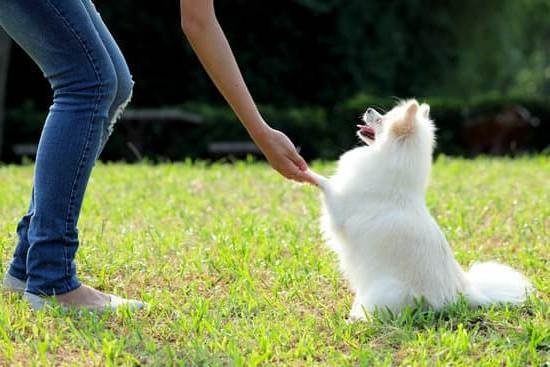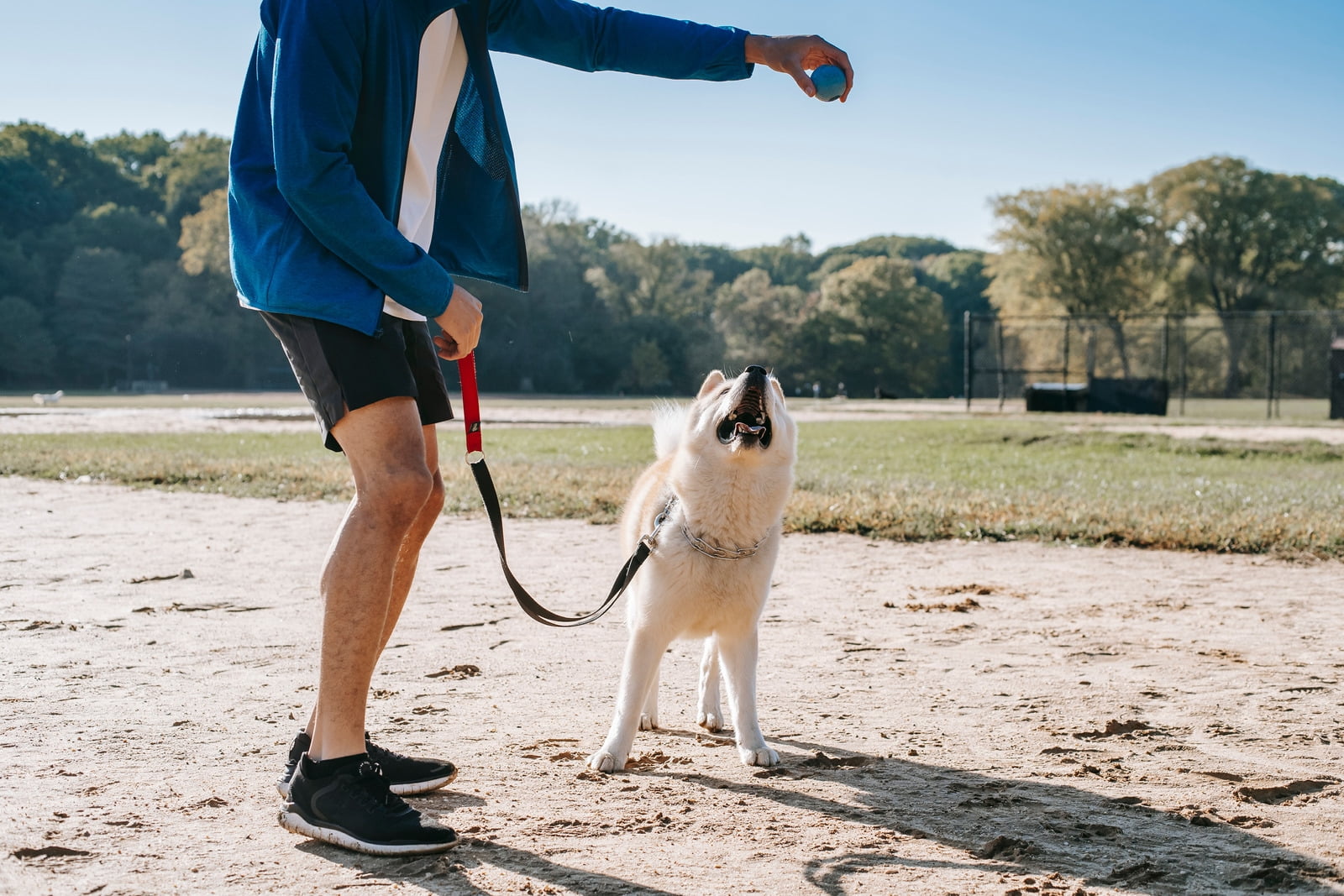Can you train a 4 year old dog? Training an older dog comes with its own set of challenges, and it’s important to understand the differences between training a younger dog versus an older one.
From assessing your dog’s behavior and history to establishing trust and connection, there are unique obstacles that come with training an adult dog. In this article, we will explore the process of training a 4-year-old dog, including basic techniques, addressing behavioral issues, teaching new tricks, and the importance of patience and consistency.
When it comes to training a 4-year-old dog, understanding the challenges is crucial. Older dogs may have developed certain habits or behaviors that need to be addressed, which can require different approaches compared to training a young puppy. Assessing your dog’s behavior and history is essential in creating a customized training plan that takes into account your dog’s personality, past experiences, and any potential behavioral issues.
Establishing trust and connection with your older dog is key to successful training. Building a strong bond creates a foundation for effective communication and cooperation during the training process. Additionally, using positive reinforcement methods can help build confidence in your adult dog and make training more enjoyable for both you and your furry companion.
Assessing Your Dog’s Behavior and History
When training a 4-year-old dog, it is essential to assess your dog’s behavior and history to understand their personality and any past training they may have received. This information can provide valuable insights into how to approach their training effectively. Additionally, identifying any behavioral issues that may affect training is crucial in developing a tailored training plan for your adult dog.
One important aspect of assessing your dog’s behavior is understanding their personality traits. Some dogs may be more independent, while others are highly sociable. Recognizing your dog’s personality can help you tailor your training methods to suit their specific needs. For example, an independent dog may require more motivation and patience during training, while a sociable dog might respond well to social reinforcement.
Moreover, evaluating your dog’s past training experiences is essential in determining what methods have been effective in the past and what approaches have not yielded positive results. This knowledge can guide you in adjusting your training techniques and avoiding strategies that may cause confusion or stress for your older dog.
Furthermore, identifying any behavioral issues such as anxiety, aggression, or fearfulness is critical in addressing these challenges during the training process. By acknowledging these issues upfront, you can incorporate targeted exercises and interventions to help your 4-year-old dog overcome such obstacles effectively.
| Aspect | Consideration |
|---|---|
| Personality Traits | Understanding whether the dog is independent or sociable |
| Past Training Experiences | Determining effective and ineffective methods in previous training |
| Behavioral Issues | Identifying anxiety, aggression, fearfulness, or other challenges |
Establishing Trust and Connection
Understanding Your Dog’s Personality and History
Before embarking on training your 4-year-old dog, it is crucial to understand their personality and history. Take into consideration their past training experiences, any previous behavioral issues, and their overall temperament. This will help you tailor your training approach to best suit your dog’s specific needs and ensure a successful training process.
Building a Strong Bond Through Positive Interactions
One of the most important aspects of training an older dog is to establish a strong bond built on trust and positive interactions. Spend quality time with your dog engaging in activities they enjoy, such as playtime or leisurely walks. This will not only strengthen your bond but also create a positive association with the training process, making it more enjoyable for both you and your dog.
Effective Communication and Consistency
Building trust and connection with your 4-year-old dog also involves effective communication and consistency. Use clear cues and consistent commands during training sessions to ensure that your dog understands what is expected of them. Additionally, be patient and understanding throughout the process, as it may take some time for your dog to adjust to the new training regimen. Consistency in your approach will help establish trust and strengthen the bond between you and your furry companion.
Basic Training Techniques
Training a 4-year-old dog can be a challenging but rewarding experience. While older dogs may have established behaviors and habits, they are still capable of learning new commands and skills with the right approach. When it comes to basic training techniques for older dogs, patience and positive reinforcement are key elements for success.
One important aspect of training an older dog is to understand their individual personality and history. Assessing your dog’s behavior and past training experiences can provide valuable insights into how to approach their training. For example, a dog that has had negative experiences with certain commands may require a different approach compared to a dog that is more receptive to training.
When introducing basic commands to an older dog, it’s crucial to use positive reinforcement methods. This can include using treats, praise, or favorite toys as rewards for following commands correctly. Older dogs may respond well to the sense of accomplishment and positive association that comes with receiving rewards for their efforts.
Consistency is also key when it comes to basic training techniques for older dogs. Establishing a routine and being patient throughout the process will help reinforce learning and encourage your dog to continue making progress. Additionally, seeking professional help from a reputable trainer or behaviorist can also provide valuable guidance in creating an effective training plan tailored to your dog’s specific needs.
| Training Techniques | Considerations |
|---|---|
| Understand Dog’s Personality & History | Assess past experiences with training and adjust approach accordingly |
| Positive Reinforcement | Use treats, praise, or toys as rewards for following commands correctly |
| Consistency & Patience | Establish routine and be patient throughout the process; seek professional help if needed. |
Addressing Behavioral Issues
When training a 4-year-old dog, it is important to be aware of potential behavioral issues that may arise. Older dogs, like humans, can develop anxiety, aggression, or fearfulness due to past experiences or changes in their environment. Here are some tips and strategies for addressing common behavioral issues in older dogs:
1. Identify the Root Cause: It’s essential to identify the underlying cause of your dog’s behavioral issues before attempting to address them. Understanding the triggers for anxiety, aggression, or fearfulness can help you develop an effective training plan.
2. Positive Reinforcement: Utilizing positive reinforcement techniques can help modify your dog’s behavior. Rewarding calm and non-aggressive behavior with treats or praise can encourage your dog to exhibit more desirable behaviors.
3. Counterconditioning: This technique involves changing your dog’s response to a specific stimulus by associating it with something positive. For example, if your dog displays fearfulness towards loud noises, you can create a positive association by offering treats or playtime during exposure to those sounds.
4. Behavior Modification: Working with a professional trainer or behaviorist can help implement behavior modification techniques tailored to your dog’s specific issues. These professionals can design a personalized training plan to address anxiety, aggression, or fearfulness effectively.
By understanding the root cause of your dog’s behavioral issues and utilizing positive reinforcement and behavior modification techniques, you can work towards addressing and improving these common problems in older dogs. Remember that patience and consistency are key when dealing with behavioral issues in 4-year-old dogs.
Training for New Tricks
Training an older dog, such as a 4-year-old, may pose some unique challenges, especially when it comes to teaching new tricks and skills. However, contrary to popular belief, it is entirely possible to continue training an adult dog and even teach them new tricks. In fact, providing mental stimulation through training can have numerous benefits for older dogs.
Benefits of Mental Stimulation
Older dogs often benefit greatly from mental stimulation, which can help keep their minds sharp and prevent cognitive decline. Training sessions provide a way for older dogs to stay engaged and active, preventing boredom and potential behavioral issues that may arise from a lack of mental stimulation. Additionally, learning new tricks or skills can boost a dog’s confidence and enhance their overall well-being.
Approach to Teaching New Tricks
When teaching new tricks or skills to a 4-year-old dog, it’s essential to approach the training with patience and understanding. Unlike younger puppies, older dogs may require more time to grasp new commands or behaviors. Using positive reinforcement techniques, such as treats or praise, can be particularly effective in encouraging an older dog to learn new tricks. It’s important to remember that consistency and patience are key components of successfully training an older dog.
Maintaining Enthusiasm
As with any type of training, maintaining enthusiasm is crucial when teaching new tricks to an older dog. Keep training sessions short and enjoyable for your dog, providing plenty of praise and rewards for their efforts. If your dog seems disinterested or frustrated during training, it might be helpful to take a break and resume the session later when they are in a better state of mind.
Patience and Consistency
Training an older dog, especially a 4-year-old, requires a high level of patience and consistency from the owner. Unlike training a younger puppy, older dogs may have established habits or behaviors that can be more challenging to change.
It’s important to understand that the process of training a 4-year-old dog will require dedication and perseverance. Here are some key points to consider when emphasizing the importance of patience and consistency in training an older dog:
- Understand that older dogs may take longer to learn new commands or behaviors due to their established habits.
- Be patient and avoid becoming frustrated if your dog doesn’t immediately respond to training. Consistent practice and positive reinforcement are crucial.
- Consistency is key in reinforcing desired behaviors. Use the same cues and rewards every time to avoid confusion for your dog.
Maintaining motivation throughout the training process is essential for both you and your 4-year-old dog. It’s natural for both the owner and the dog to experience moments of frustration, but staying motivated is vital for achieving positive results. Here are some tips on how to maintain motivation while training an older dog:
- Celebrate small victories – even small progress should be acknowledged and celebrated.
- Set realistic goals and be patient with the pace of your dog’s progress.
- Stay consistent with training sessions, but also ensure they remain enjoyable for both you and your dog.
Remember, building a strong bond with your older dog through trust, understanding, patience, and consistency will greatly contribute to successful training outcomes.
Seeking Professional Help
In conclusion, while it may be challenging to train a 4-year-old dog, it is definitely possible with the right approach and mindset. Understanding the differences in training an older dog versus a younger one is crucial, as well as taking the time to assess your dog’s behavior and history before beginning any training regimen. Building trust and connection with your dog is essential for effective training, as this creates a solid foundation for learning.
Basic training techniques, such as using positive reinforcement methods, can be highly effective for older dogs. Additionally, addressing any behavioral issues that may arise is important, and seeking professional help when needed can make a significant difference in your dog’s progress. Remember to be patient and consistent throughout the training process, as this will ultimately lead to better results.
If you encounter difficulties or feel overwhelmed during the training process, do not hesitate to seek professional assistance from a qualified trainer or behaviorist who can provide tailored guidance based on your dog’s specific needs. With dedication, patience, and the right support system in place, you can successfully train your 4-year-old dog and strengthen the bond between you and your furry companion.
Frequently Asked Questions
Is It Too Late to Train a 4 Year Old Dog?
It is not too late to train a 4 year old dog. While it may take more time and patience compared to training a younger dog, older dogs are still capable of learning new behaviors and commands. Consistent training and positive reinforcement can be effective in teaching an older dog new tricks or modifying their behavior.
Is 4 an Old Age for a Dog?
Generally speaking, 4 years old is not considered old for most dog breeds. Many dogs live well into their teens, so a 4 year old dog is still in the prime of its life. However, certain large or giant breeds may be considered senior at this age, while smaller breeds may still be very active and youthful.
Can a 4 Year Old Dog Still Learn Tricks?
Yes, a 4 year old dog can still learn new tricks. Dogs are intelligent animals that are capable of learning throughout their lives.
With the use of positive reinforcement, consistency, and patience, a 4 year old dog can definitely pick up new tricks or commands. It’s important to tailor the training methods to the individual dog’s personality and preferences to achieve the best results.

Welcome to the blog! I am a professional dog trainer and have been working with dogs for many years. In this blog, I will be discussing various topics related to dog training, including tips, tricks, and advice. I hope you find this information helpful and informative. Thanks for reading!





